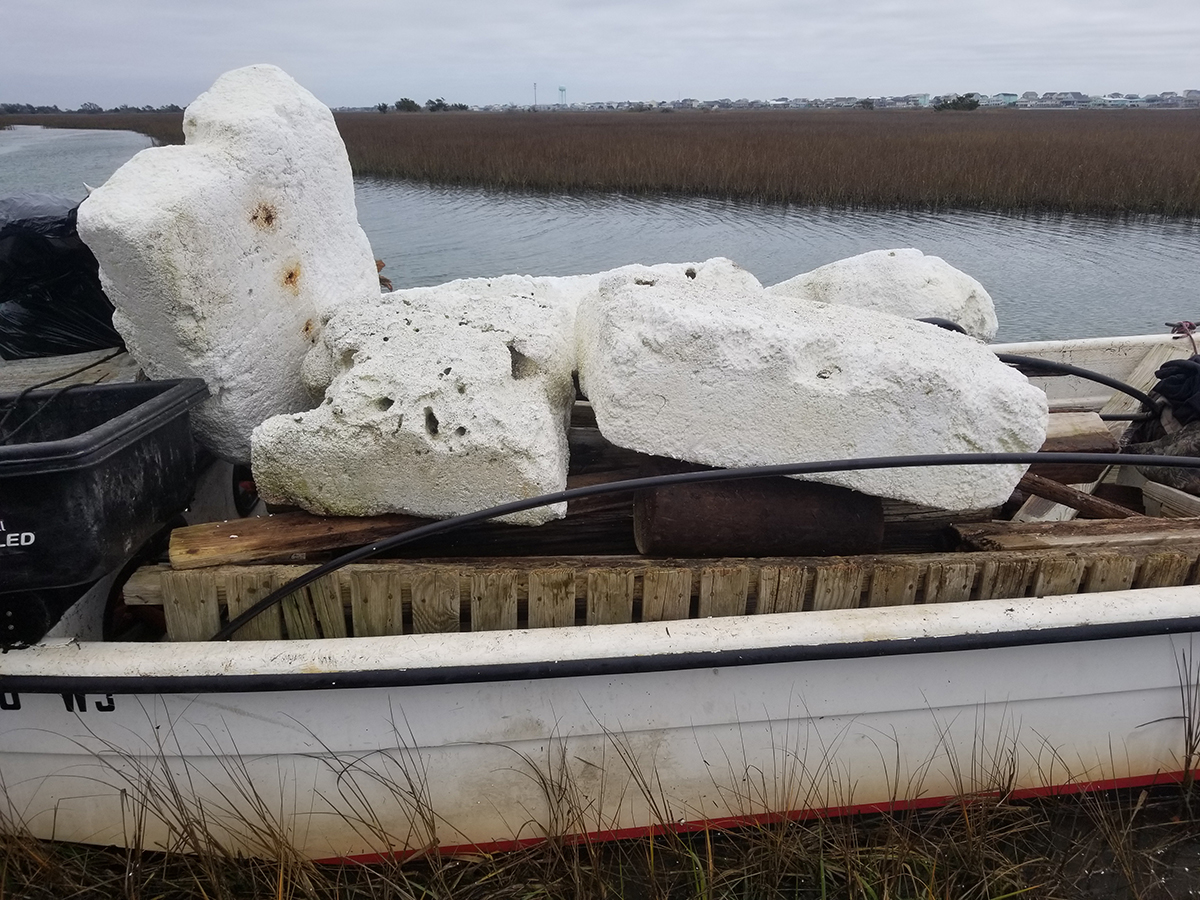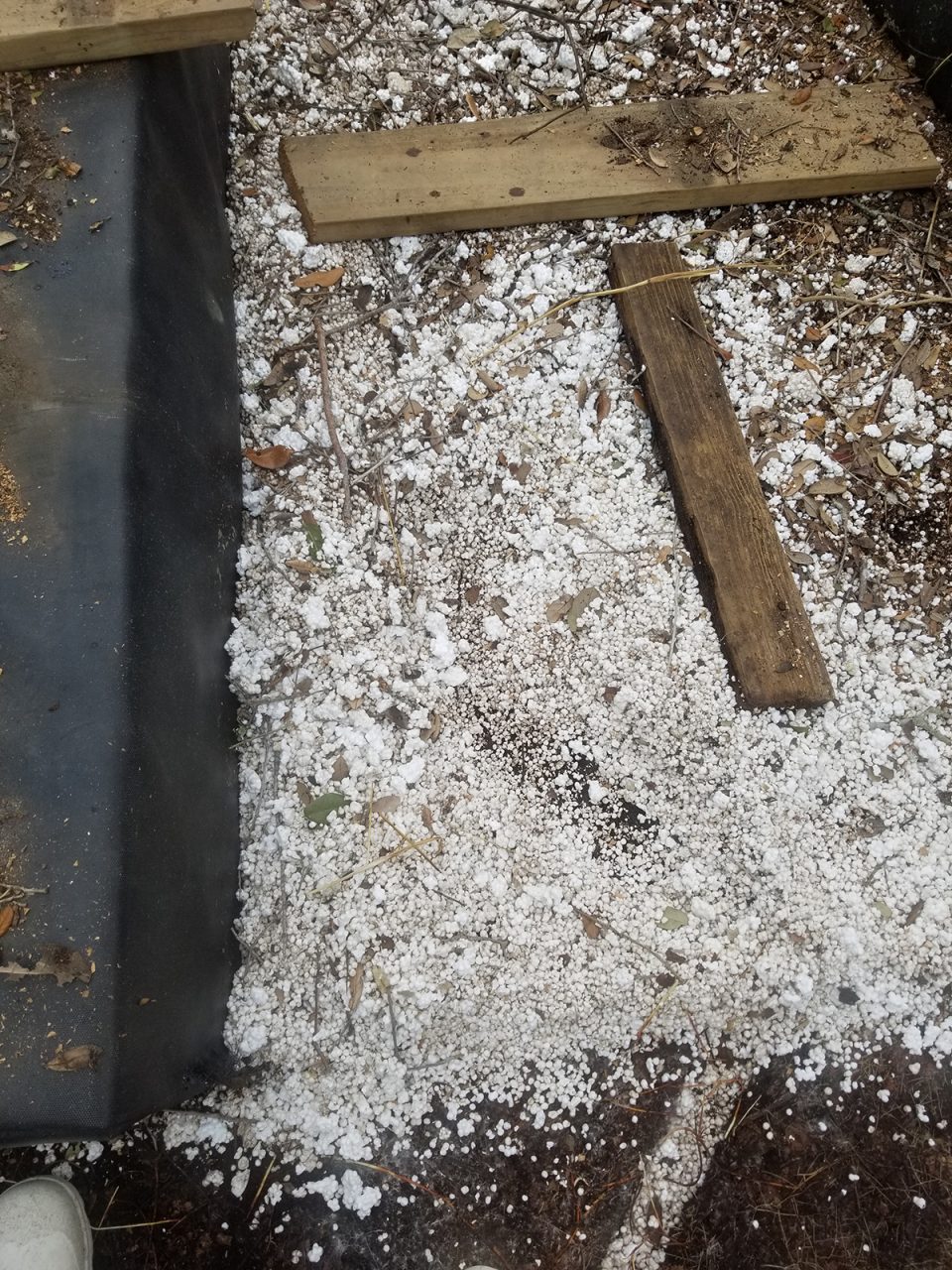
TOPSAIL ISLAND – An island-wide initiative to cut down on plastic waste is gaining traction as Topsail’s three beach towns consider banning a type of material used to make floating docks.
Topsail Beach is leading the charge in adopting an ordinance that would prohibit unencapsulated polystyrene from being used in repairs and new construction of docks.
Supporter Spotlight
Town commissioners there recently gave administrators the green light to create a draft ordinance for the board to consider adopting at their April meeting.
Surf City and North Topsail Beach are expected to follow suit in what would be a major step in an island-wide waste reduction campaign that aims, in part, to promote plastic waste reduction by local businesses.
If approved, the ordinance would be the first in North Carolina banning the use of unencapsulated polystyrene in docks, Topsail Beach Mayor Steve Smith said.
Polystyrene is a plastic used to make various consumer products such as Styrofoam food packaging and coolers. When unencapsulated, polystyrene can break up with weathering, scattering clumps and small fragments in waterways and on shorelines. The material can degrade into microplastic, which can easily be ingested by wildlife.
“There’s no way that that can be cleaned up,” said Kerri Allen, coastal advocate and southeast regional manager of the North Carolina Coastal Federation’s Wilmington office.
Supporter Spotlight
Since 2019, Coastal Federation-led crews have removed more than 2 million pounds of marine debris including abandoned boats, storm-damaged docks and homes, fishing gear, poorly managed construction sites, plastics in wastewater and stormwater discharges, and litter from coastal estuaries up and down the North Carolina coast.
Three- to four-man crews continue to pick up on average 2 tons of debris a day, Allen said.
About 75-80% of that is from docks, piers, gazebos and other waterfront structures.
Ability to choose
In 2020, the Coastal Federation launched the N.C. Marine Debris Action Plan in partnership with community groups, government agencies and academia, to clean up the clutter and promote building codes for structures like docks aimed at reducing post-hurricane and other coastal storm debris.
“As coastal property owners, anyone who has a dock or pier, you really do have the ability to choose a strong contractor that selects these best-management practices,” Allen said.
A majority of microplastics being recovered on the beaches are polystyrene beads, she said. Next month, the Coastal Federation is kicking off program where volunteers from North Topsail Beach in Onslow County down to Sunset Beach in Brunswick County will collect microplastics from the beach.
Topsail Beach commissioners during their March 9 meeting discussed what they would like to see in a draft ordinance, one that would require new docks be built using encapsulated polystyrene. Older, storm-damaged docks that have unencapsulated polystyrene would have to be repaired with encapsulated material.
A property owner must obtain a town permit to build a dock or pier.
Smith noted that most contractors are now using encapsulated polystyrene, “but the non-encapsulated is still available and so we want to ensure that as we go forward the non-encapsulated is not used.”
“There’s other issues here that we’ll have to work, but in terms of coastal management it’s taking the next step, no matter how small, it needs to be done at this point,” he said.

Carbon-copy ordinances
Surf City Mayor Doug Medlin said the plan is to essentially have a carbon-copy ordinance in each town.
“We’ll probably do something similar,” he said, adding that a unified ordinance will be discussed March 24 during the Topsail Island Shoreline Protection Commission, or TISPC, meeting.
TISPC Vice-Chairman and North Topsail Beach Board Mayor Pro Tem Mike Benson said he expects a proposed ordinance for that town will be on the board of aldermen agenda next month.
“For me it’s a no-brainer because it’s the simple thing to do and it’s going to protect the environment,” he said. “We are in favor of everything that can be done to manage plastics on our beach.”
Between the staggering amount of debris being collected through the Coastal Federation’s initiative and firsthand observations by boaters and kayakers on the water, Smith said people are willing to start taking small but important steps that will eventually reduce waste.
“Our hope is that these three towns can really create a pilot ordinance that other towns can adopt,” Allen said.
Big turnout
Earlier this year, a meeting of stakeholders — everyone from town officials from each of the municipalities, business owners, realtors and property owners — was held for those in attendance to discuss ways to reduce the use of plastics and other disposable products on the island.
Pender County Tourism Director Tammy Proctor was hoping for a turnout of about 30 stakeholders. That number surpassed 90.
They’ve decided to take a step-by-step approach, one that is less about mandates and more about positive messaging that encourages property owners and tourists to change their habits.
“Glass on the beach (is not allowed). (Tourists) pack for the day and they bring it to the beach,” Proctor said. “Those are the kinds of things that we want to raise awareness for and a sign at the beach isn’t enough. We want to reach folks before they get here. This is all of our beaches. This is all of our waterways. Let’s all of us take care of our natural resources.”
Scott Franko, who sits on the board of the Greater Topsail Area Chamber of Commerce and is the marketing director of Treasure Realty, plans to promote reusable shopping bags printed with a design of the island to grocery stores in the area and the beach municipalities on the island.
He had 10,000 bags made last year and began distributing them last August to businesses that are typical tourist hotspots.
Franko is also the man behind the BEach Clean poster with a short and to the point leave-no-trace message: use trash containers; no glass on the beach; pick up after pets; and fill in holes on the beach.
“It’s an educational program,” Franko said. “It’s an informational program. Over time we’re hoping to change consumer behavior. Over time we’re hoping to get the businesses around here to also change their behavior to change the consumer’s behavior. The goal is you want people to wanna. If they wanna do something that’s better than mandating something and to get to the point of wanna and buy-in you have to nurture a message enough and hope that a majority of the people get it.”







